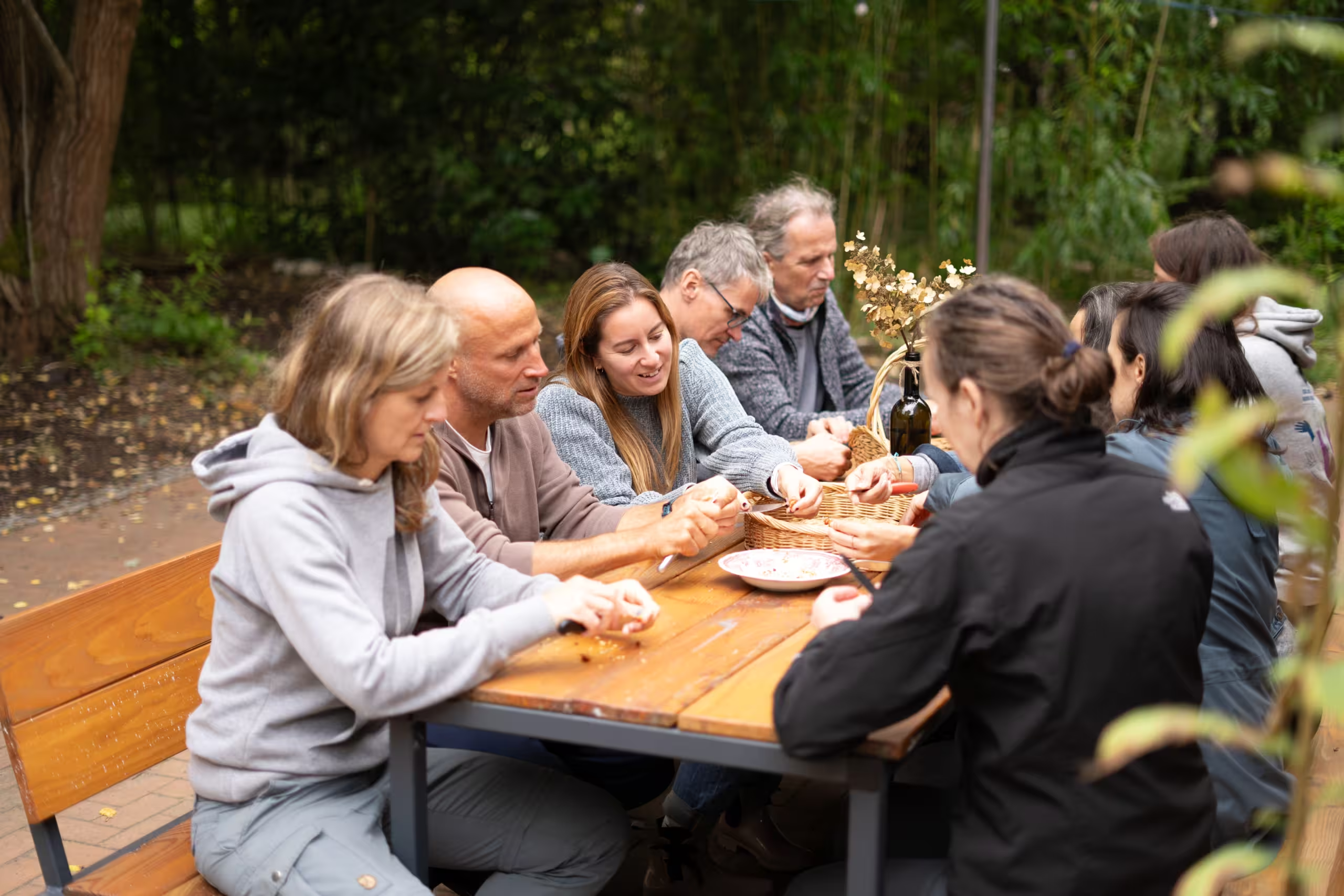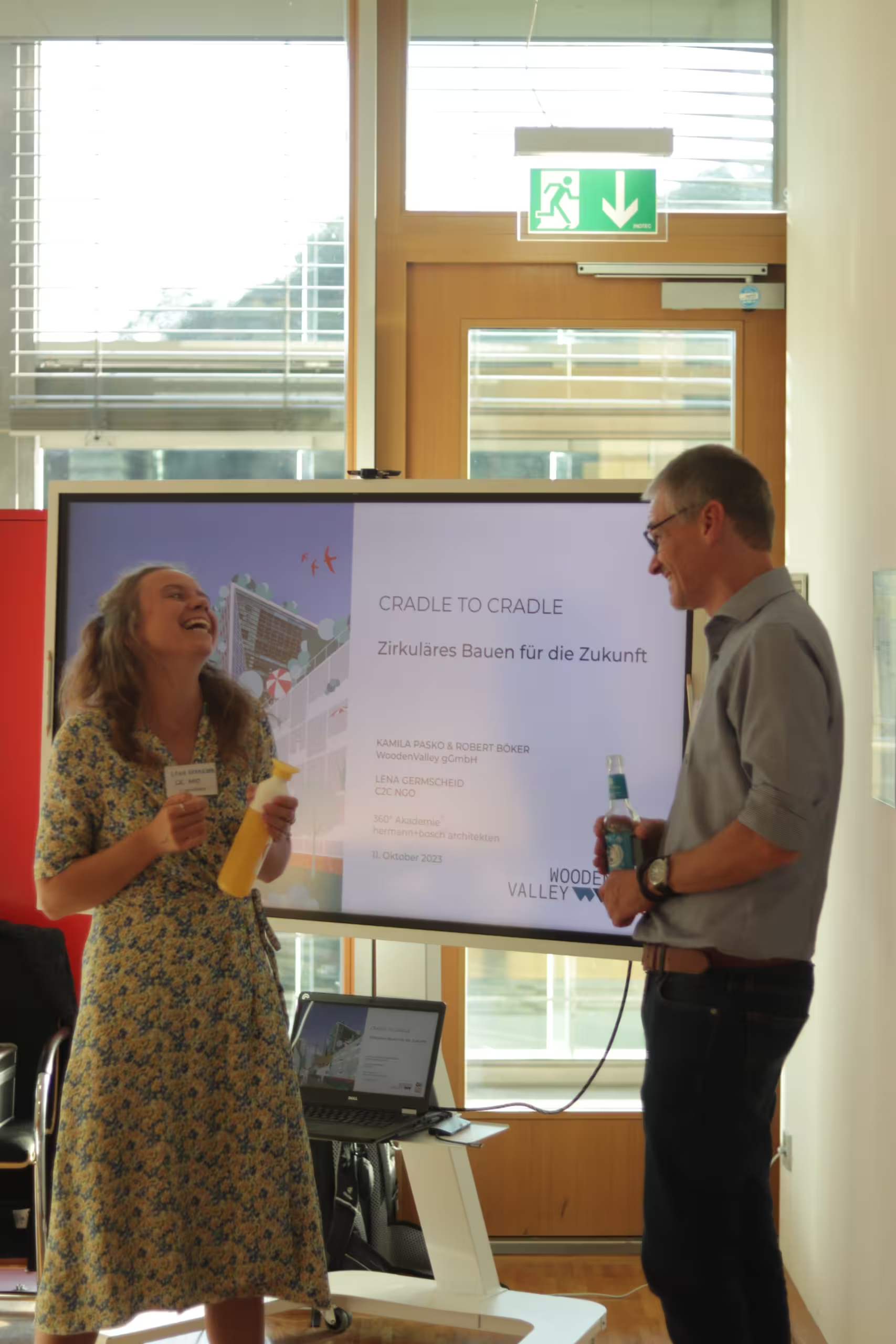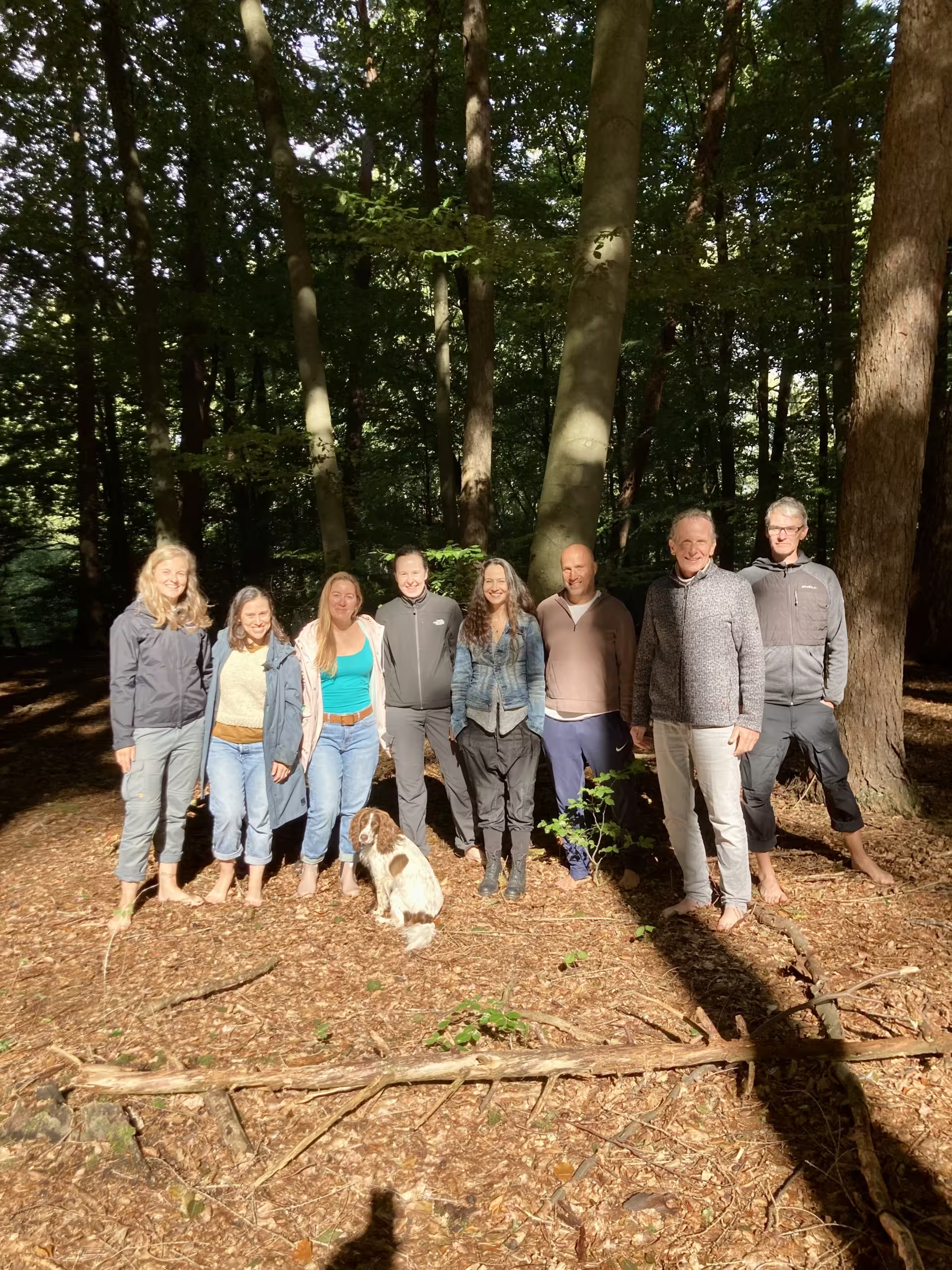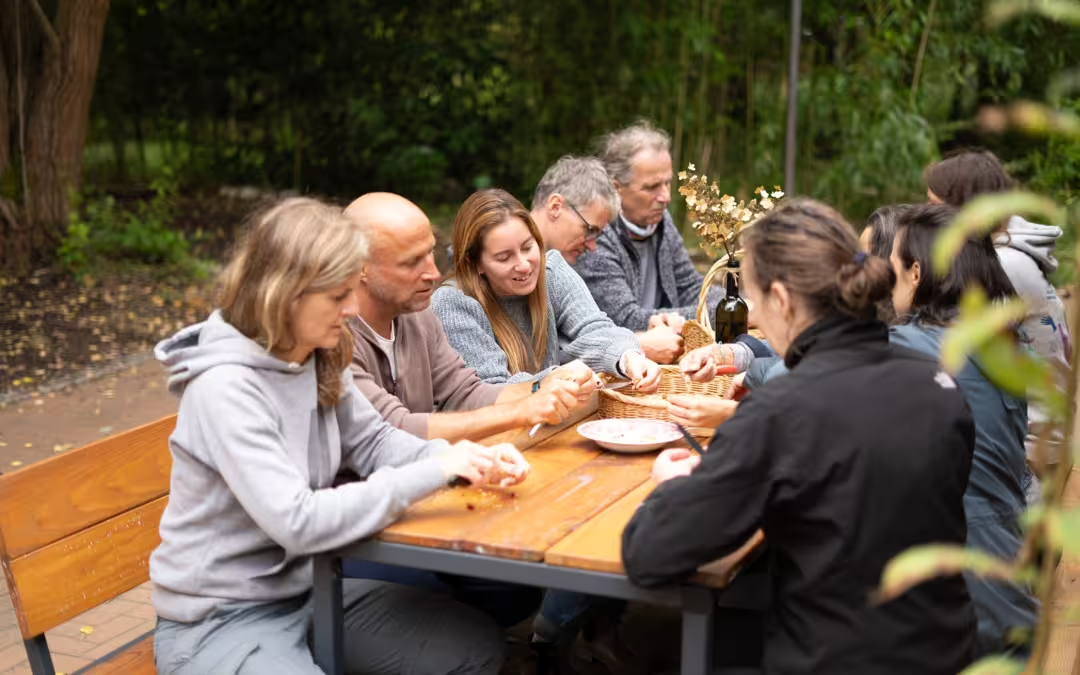Have you ever wondered where the wood in the lobby floor, which you’re dragging your suitcase across, comes from? Or thought about the unusual shape of a building? We had the opportunity to connect with Kamila Pasco from Woodenvalley, a non-profit organization dedicated to educating about sustainable construction practices. Let us take you on a journey to understand the basics of architecture and construction so that you can keep an eye out the next time you stay at an accommodation.
Hi Kamila, you and your team have spent a lot of time learning about buildings and construction. What has been the biggest surprise or the most extraordinary best-practice you have discovered so far?
One of the most surprising discoveries has been the incredible potential of timber as a climate-positive building material. Not only does it store carbon throughout its life cycle, but when sourced sustainably, it can significantly reduce the overall carbon footprint of a building compared to traditional materials like concrete and steel. A particularly inspiring best practice is the use of modular timber construction in circular building projects. By designing buildings with wooden components, which can be easily dissembled, we can extend the life of materials, reduce waste, and make reuse feasible on a large scale. This approach not only supports circular economy principles but also opens up new possibilities for sustainable architecture.

What exactly is Woodenvalley and what does your work consist of?
WoodenValley is a non-profit organization dedicated to promoting climate-positive building and sustainable construction practices. We focus on early project stages, specifically the preliminary design phase, known as Leistungsphase 0, where we advise on incorporating circular economy principles and sustainable materials from the start. Our goal is to help clients set the foundation for buildings that minimize their carbon footprint and maximize resource efficiency. Additionally, we conduct lifecycle assessments (LCA) to evaluate the environmental impact of buildings throughout their lifespan, ensuring that sustainability remains a key focus during all project phases.
What is the current state of buildings? Which impact do travel accommodations we are staying at have on the environment?
The current state of buildings is still heavily dominated by conventional materials like concrete and steel, which are associated with high carbon emissions. Many buildings, including hotels, are designed for short-term functionality rather than long-term sustainability, leading to significant amounts of construction waste and energy-intensive operations. Hotels, in particular, are often built using traditional construction methods, which prioritize speed and cost over environmental considerations. However, there is a growing movement towards more sustainable practices, such as using low-carbon materials like timber, incorporating energy-efficient systems, and designing for adaptability and circularity. While the shift is still in its early stages, it’s encouraging to see more projects embracing these sustainable approaches.

“We can create buildings that are not only functional and comfortable but also have a positive impact on the environment.”
What exactly are aspects that can be taken into consideration when constructing a new building?
When constructing a new building, there are several key aspects to consider to make it more sustainable and climate-positive. These include:
1. Material Selection: Opting for low-carbon and renewable materials like sustainably sourced timber can reduce the building’s carbon footprint. Using recycled or upcycled materials also supports a circular economy.
2. Energy Efficiency: Incorporating energy-efficient systems, such as high-performance insulation, smart building technologies, and renewable energy sources like solar panels, helps to reduce the building’s energy consumption and operating costs.
3. Lifecycle Analysis (LCA): Evaluating the environmental impact of materials and construction methods across the entire lifecycle of the building, from production to disposal, ensures that sustainability is prioritized throughout.
4. Circular Design: Designing for adaptability, disassembly, and reuse allows components to be repurposed at the end of the building’s life, minimizing waste.
5. Indoor Climate and Health: Using materials with low emissions, ensuring good indoor air quality, and maximizing natural light contribute to a healthy indoor environment for occupants.
6. Water Management: Implementing water-saving technologies and systems for rainwater harvesting can reduce water consumption and improve resilience.
By considering these aspects, we can create buildings that are not only functional and comfortable but also have a positive impact on the environment.
Keep an eye on those aspects next time you travel. Feel free to call and ask about it or talk to the staff about the positive things you see implemented and the aspects you find missing. That way you will become a Changemaker since showing interest in sustainability helps push the industry towards greener practices. Find more aspects you can touch on in our Sustainable Dreamcatcher.
And what could a holiday accommodation do when they have an old building?
If a holiday accommodation is working with an older building, there are several sustainable strategies that can help improve its environmental performance:
1. Energy Retrofit: Upgrading insulation, windows, and heating systems can significantly improve energy efficiency. Installing renewable energy sources, such as solar panels, can also reduce the reliance on fossil fuels.
2. Sustainable Renovation Materials: When renovating, using eco-friendly and low-emission materials can help reduce the building’s carbon footprint. Reclaimed wood, recycled metal, or natural materials like cork and bamboo can be excellent choices.


3. Water Efficiency Improvements: Retrofitting with low-flow fixtures, efficient plumbing, and systems for rainwater harvesting can reduce water consumption and lower utility costs.
4. Improving Indoor Air Quality: Ensuring good ventilation and using non-toxic paints and materials can enhance the health and comfort of guests. Air quality sensors can help monitor and maintain optimal conditions.
5. Implementing Circular Economy Practices: Reuse and upcycle existing building materials wherever possible during renovations. If certain components need to be replaced, choose materials that can be easily recycled or repurposed in the future.
6. Adding Green Spaces: Incorporating green roofs, vertical gardens, or planting native vegetation around the property can help improve biodiversity, reduce heat islands, and offer a more appealing environment for guests.
These steps can help transform an older building into a more sustainable and appealing accommodation, while also reducing long-term operating costs and enhancing guest satisfaction.
What do you recommend for travelers. How can they contribute to more sustainable buildings in the tourism business?
Travelers can play a significant role in promoting sustainable buildings in the tourism industry by making conscious choices and voicing their preferences:
First of all you can choose eco-friendly accommodations. Opt for hotels, guesthouses, or vacation rentals that prioritize sustainability. Look for certifications like LEED for construction aspects in particular or other eco-labels (LINK to our certification page) that indicate responsible management practices. Above that you can support businesses that use sustainable materials when booking a stay. Inquire about the building materials used or renovations done. Accommodations that use sustainable materials or have undergone energy retrofits contribute positively to the environment. Your own behavior during your trip also has a high impact. Being mindful of your resource consumption, such as water and electricity, and participating in towel and linen reuse programs are great ways to contribute and also inspire other tourists to become conscious of these aspects likewise.
Your potential to contribute is not over when you return home. When providing feedback leave reviews that highlight the sustainable features of the accommodation or suggest improvements. This can encourage businesses to invest in more sustainable practices. As a last hint, I want to share that choosing the right destinations is also an important step. Support regions and cities that prioritize sustainable development and eco-friendly accommodations, so that you boost demand for more climate-positive buildings and infrastructure.
As you can see, travelers have the power to influence the tourism industry and demanding that accommodations will be built and operated more sustainably in the future.
“Travelers have the power to influence the tourism industry”
Do you have a country on your “must-go” list where they have a particularly environmental way of constructing buildings ?
Yes, one country that stands out for its environmentally conscious approach to building is Norway. It has been a pioneer in sustainable architecture, particularly with timber construction. Norway is home to some of the tallest wooden buildings in the world, like the Mjøstårnet, a 85.4-meter-high timber skyscraper. The country prioritizes using locally sourced materials, energy-efficient design, and integrating renewable energy systems in new projects. Additionally, Norway has stringent building regulations aimed at reducing carbon emissions and promoting the circular economy, making it a great destination to see innovative sustainable architecture firsthand. It’s definitely on my “must-go” list for anyone interested in eco-friendly building practices. Another country on my list is the Netherlands, which has made significant strides in sustainable architecture and circular construction. The Dutch approach focuses on innovative solutions for energy efficiency, reuse of materials, and reducing the environmental impact of buildings. For example, Amsterdam’s “Circl” pavilion is a fully circular building designed to be easily disassembled, with materials that can be reused or recycled at the end of the building’s life. The Netherlands is also known for its green roofs, energy-positive buildings, and large-scale use of sustainable materials in both residential and commercial projects. It’s a fantastic place to explore cutting-edge environmental building practices and learn how sustainable development is integrated into urban planning.
Find out how sustainably your accommodation is built. Learn how different materials and construction methods can affect the well-being of your customers and your economic profit. Get in touch if you would like one of our Tiny Learning Spaces to come to you to inspire children and adults about circular tourism.

Lilith Diringer
This interview has been conducted by Lilith. Our CEO is eager to learn everything about sustainable travel and share deep insights with you. Her vision is to make people as well as nature profit from travelling. She wishes you a great trip wherever the next booking takes you and is happy to share details and insights on request: [email protected]

